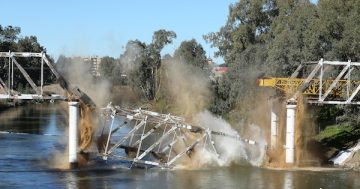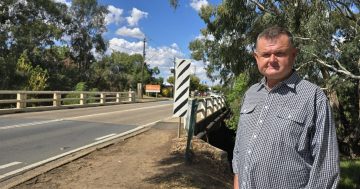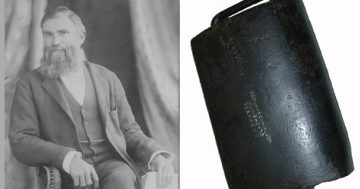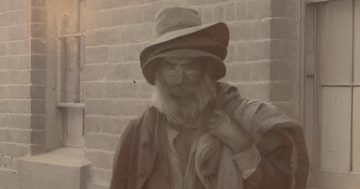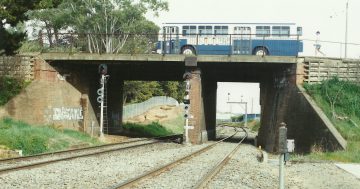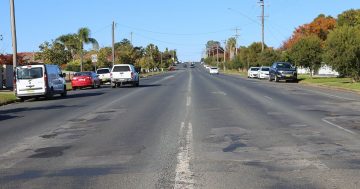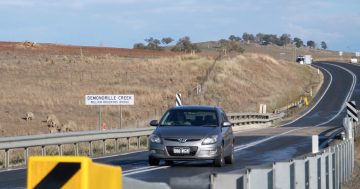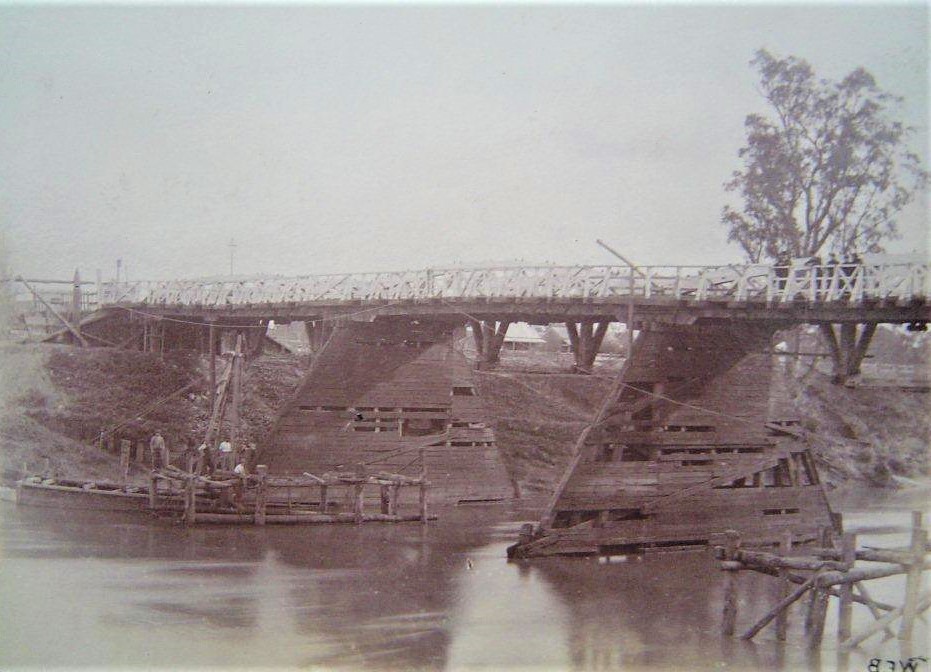
The Company Bridge before its demolition. Photo: Museum of the Riverina – Fitzroy Collection.
Today the Museum of the Riverina team take us travelling back to the 19th century to take a look at the first bridge that spanned the Murrumbidgee River at Wagga.
As Wagga continued to grow, the two punts that had served as a means of transport across the river were no longer sufficient.
As the government would not finance the erection of a permanent bridge, a joint stock company was formed on 23 August 1860.
The Wagga Bridge Company was established with a view to building and maintaining a bridge at a site already approved by the NSW Department of Public Works.
Situated between Crampton and Travers Streets, the “Company Bridge” as it became known was officially opened on 27 October 1862 by Eliza Tompson, wife of F.A. Tompson.
It was 91 metres long, with a six-metre wide roadway and metre-wide footpath.
The company’s first directors were F.A. Tompson, George Forsyth, Dr Allen Bradley Morgan, Henry Baylis and Henry Wallace.
Tolls were levied as follows:
- Threepence for every foot passenger
- Twopence for every pig or goat
- Halfpence for every sheep or lamb
- One shilling for every horse or mule
- Fourpence for every head of cattle
- One shilling per wheel for each cart or drawn vehicle and fourpence per beast
Even though the people of Wagga now had a bridge across the river, they soon became dissatisfied with having to pay tolls and ingenious ways to evade paying were devised.
The bridge stood until the early 1890s when its deterioration could no longer be ignored.
It was eventually replaced with the Hampden Bridge, which opened on 11 November 1895.
Photo and information supplied by Michelle Maddison, Manager of the Museum of the Riverina.







